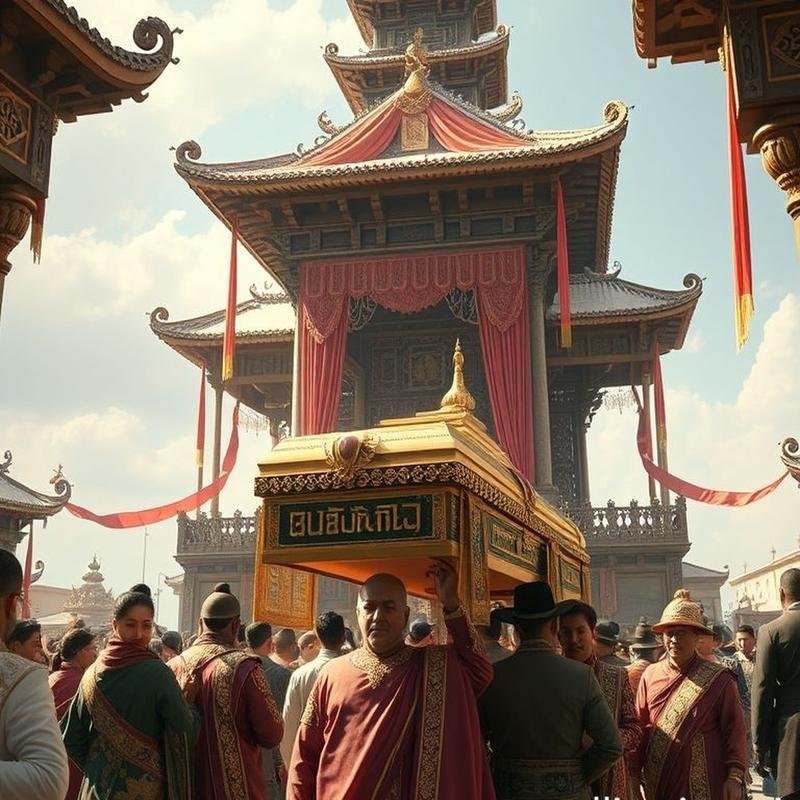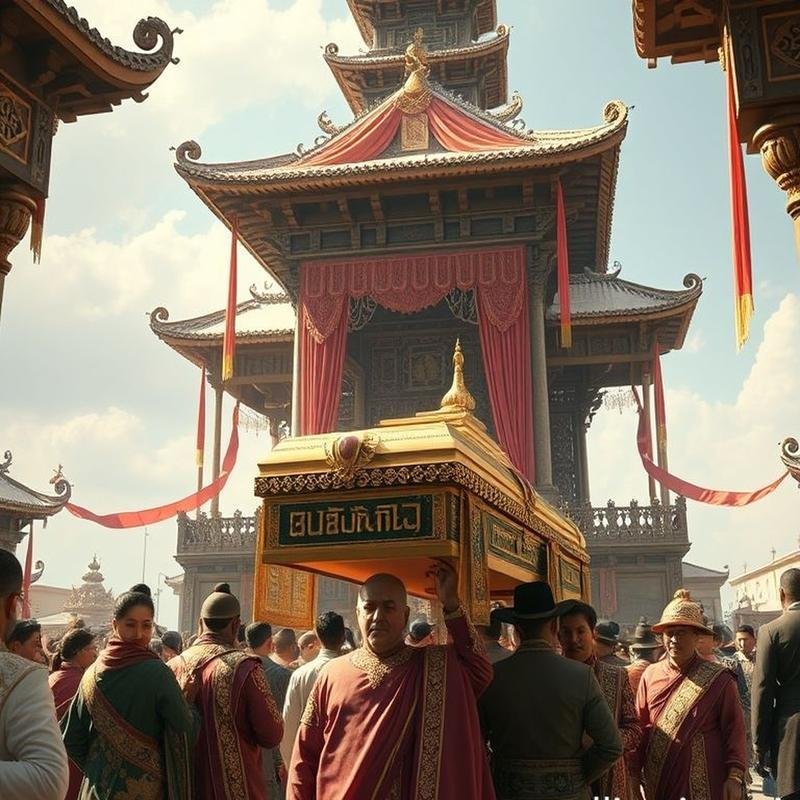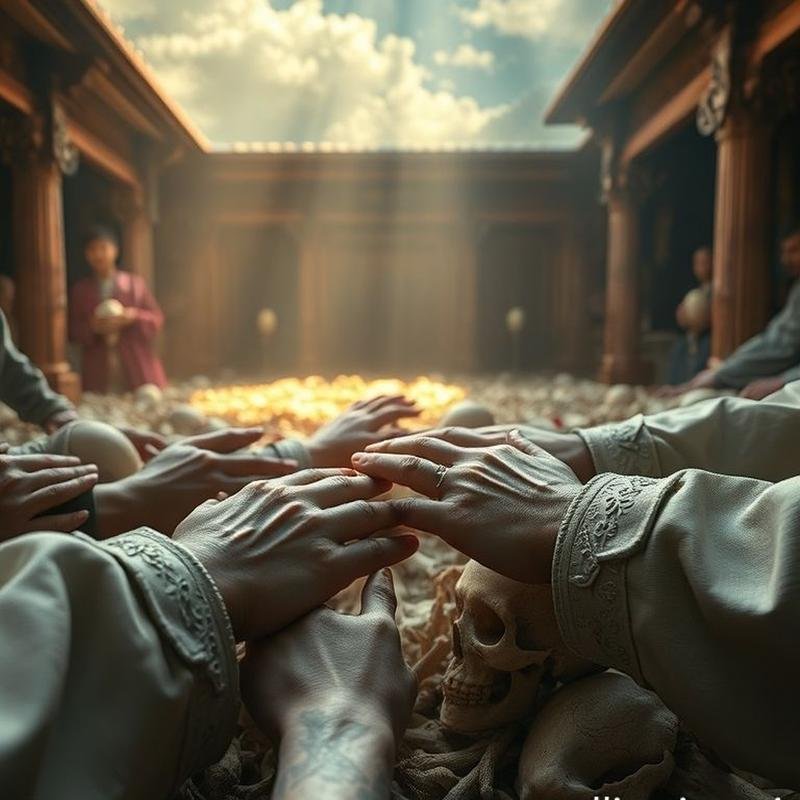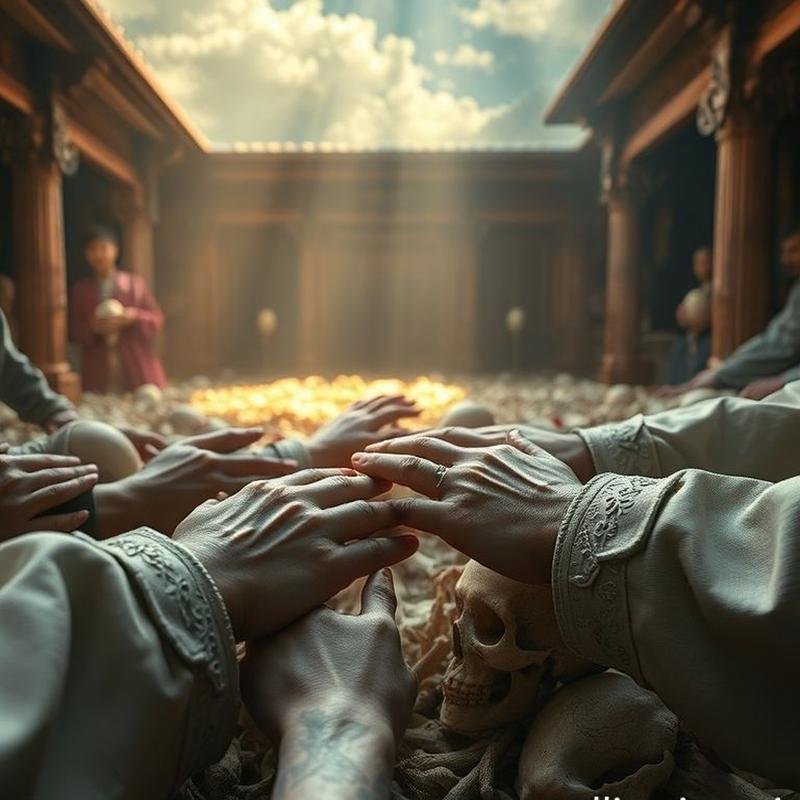The Ma’nene’ Ritual: Do the Toraja People Communicate with the Deceased?

Ma’nene’ Ritual: Talking to the Dead in Toraja
What profound affection compels the living to exhume their deceased, not for reburial, but to groom their hair and adorn them in the finest attire? This visual documentary unveils the Ma’nene’ ritual of the Toraja people in Indonesia, revealing their perception of death not as an end, but as an extension of an eternal bond with their ancestors and families. We delve into the core of their beliefs, which integrate death as an intrinsic element of life.
Before exploring the intricacies of this extraordinary heritage, share your insights in the comments section. To discover the complete narrative, join us on this documentary channel.
The Toraja People and Their Beliefs
Nestled in the heart of Sulawesi, Indonesia, where towering mountains embrace deep valleys, reside the Toraja people, inhabitants of the highlands. Here, in this remote enclave of approximately 650,000 individuals, a unique perspective on life and death unfolds. While many Torajans outwardly embrace Christianity or Islam, their spiritual roots run deeper, adhering to the ancient beliefs of Aluk, or the Way of the Ancestors, which guides their actions. Along this path, death is not an end, but a transformation, a gateway to the spirit world.
Aluk To Dolo: The Way of the Ancestors
Here, where funerals extend for days, even weeks, and where the arena abounds with offerings of buffalo and pigs, the Ma’nene’ ritual unfolds, a captivating ceremony that defies Western comprehension. Here, the departed are not simply laid to rest, but are brought back to life, if only momentarily, in a poignant and emotionally charged spectacle. This spiritual depth is rooted in Aluk To Dolo, or the Way of the Ancestors, which is not merely a series of rituals, but a comprehensive system of life. It is the ancient code that governs the Toraja people’s view of life, death, and the afterlife. The essence of Aluk To Dolo lies in the belief in two parallel worlds: the world of the living and the world of the spirits, in constant and continuous interaction. Ancestors are not merely fading memories, but active intermediaries between the living and the supreme deity, Puang Matua, a vital link connecting the past to the present. Animal sacrifices are not just offerings, but a necessity to ensure the soul’s peaceful passage to Puya, the land of spirits, where it continues its eternal journey. The higher a person’s social standing, the more elaborate and lavish the burial ceremonies, reflecting the enduring importance of social status even in the afterlife.
The Ma’nene’ Ritual Explained
Ma’nene’, the ritual of exhuming the dead, is not merely a visual spectacle, but a profound expression of enduring familial love, a tribute to departed ancestors, and a reinforcement of the sacred bonds between the living and the dead. In the heart of Toraja, where the world of the living and the dead intertwine in a unique tapestry, the Ma’nene’ ritual begins with a consultation with the Tomina, the priest who selects the optimal day for exhuming the bodies. This is not merely scheduling an appointment, but a deep spiritual discernment, aimed at ensuring complete harmony between our world and the world of spirits. With utmost respect and reverence, the corpses are retrieved from their final resting places, whether rocky caves embraced by towering mountains or wooden coffins suspended gently between earth and sky. Every movement is performed with meticulous care, for this is not about a lifeless corpse, but a body that holds precious memories and cherished souls. A meticulous and thorough cleaning process then begins, using brushes and water to remove the dust of time and its accumulated traces. The corpses are then exposed to the warm rays of the sun to dry, as if drawing warmth and light after a long slumber. After cleaning, the deceased are dressed in new clothes, often those they loved and wore in their lifetime. They wear them again, as if preparing to meet their loved ones in another world, a world that awaits them eagerly. Taking family photos with the corpses is not merely an inherited custom, but a firm affirmation of the continued close relationship between the living and the dead. Smiles and tears mingle in a moving and profound scene, reflecting the love and longing that time cannot erase.
A Celebration of Life and Ancestral Respect
Ma’nene’ is not a display of death, but a solemn celebration of life, and an affirmation that family ties transcend the boundaries of time and space. It is a sincere expression of deep respect for the ancestors, who form an integral part of the identity of the Toraja people. But Ma’nene’ is more than just a spectacle; it is an embodiment of the deep Toraja philosophy, which sees death as a natural extension of life. The deceased is not absent, but is always present in memory and heart, an integral part of the extended family fabric. Ma’nene’, meaning “caring for ancestors,” goes beyond simply cleaning and dressing corpses; it is a sincere expression of deep love and ingrained respect. In the unique Toraja culture, the dead are treated with great respect, as if they were patients in a coma or sleeping peacefully. They are kept in homes for weeks, months, or even years, before being buried. During this time, they are offered food and drink, and friendly conversations are held with them, as if they were still an integral part of vibrant daily life. Ma’nene’ is a precious annual opportunity to renew strong family ties. Relatives gather from far and wide to participate in the solemn rituals, and to recall memories of the achievements and deeds of the deceased. This annual gathering strengthens unity and solidarity among family members, and helps to transmit cultural values and ancient traditions from generation to generation, preserving the legacy of the ancestors. According to the Toraja’s deep-rooted beliefs, preserving the memory of the ancestors contributes to the continued blessing and protection of the living.
Modernity vs. Tradition
Years of deep-rooted traditions are now intertwined with the threads of accelerating modernity in Tana Toraja. Since the 1980s, this region has witnessed an increasing influx of tourists. In 2019, Toraja welcomed approximately 150,000 visitors, raising fundamental questions: Has the ancient Ma’nene’ ritual become merely a faded tourist spectacle, losing its authentic spirit? Some believe that these ancient rituals are being commercially exploited, and that their spiritual and cultural value is gradually fading before the lenses of curious cameras. In contrast, some young Torajans express deep concern about the exorbitant costs required for these practices, from new clothes and expensive sacrifices, in a world where the pressures of life and difficult economic conditions are increasing. Another controversy revolves around the use of formalin in preserving corpses; while some consider it an urgent necessity to face the challenges of the harsh tropical climate, others object to it for deep-rooted religious and cultural reasons. Amid these complex challenges, the local government is striving to regulate cultural tourism, and to strike a delicate balance between preserving ancient traditions and meeting the needs of increasing visitors. By imposing entrance fees and designating areas for rituals, the authorities are trying to protect the authenticity of Ma’nene’ from distortion and deviation. In 2023, a non-governmental organization launched an ambitious educational program to promote cultural awareness.
The Financial Implications of Honoring the Dead
A legacy that transcends the boundaries of life, but is firmly rooted in reality. A Torajan funeral is not just a farewell; it is a substantial investment, which may extend its financial impact for generations to come. Imagine families saving for decades, selling precious land, and borrowing significant sums of money, all to meet the requirements of a funeral that may exceed half a million dollars. It is an amount equivalent to many years of diligent work, spent generously to honor the memory of the deceased. Here, money is not seen as an end in itself, but as a means of preserving the sacred bonds that connect the living with the dead. The Ma’nene’ ritual, with all its considerable expenses, becomes a compelling social imperative, and a sacred covenant that cannot be disavowed towards the departed ancestors. Generous sacrifices, with buffalo and pigs liberally distributed to those present, embody the authentic Torajan generosity, and strengthen the bonds of the community. But is this tradition, deeply rooted in history, sustainable in our evolving contemporary world? A question that demands urgent consideration. Some view the increasing tourism as a valuable opportunity to offset the substantial costs, but this solution carries with it the inherent risk of transforming the rich cultural heritage into a commodity.
Controversies and Concerns
But is everything we observe in the Ma’nene’ ritual merely a captivating folkloric depiction? Or is there another perspective to consider? While some perceive this ritual as a unique expression of love and appreciation, others raise critical concerns regarding public health. In 2012, the health authorities in Tana Toraja issued a warning about the potential risks of transmitting diseases from embalmed corpses, and emphasized the need to implement strict precautions. Is it not essential to find a delicate equilibrium between preserving this cultural heritage and ensuring the safety of the community? The debate extends beyond health, encompassing economic and spiritual dimensions. Some anthropologists suggest that the Ma’nene’ ritual may have evolved into a commodity, attracting tourists and contributing to the politicization of local culture. Has this ritual, once an expression of familial intimacy, become merely a commercial spectacle? Some families even express profound concern about the exorbitant costs of the rituals, which may financially burden them and lead to indebtedness. The issue does not end there; in 2018, a group of Muslim clerics issued a fatwa cautioning against certain aspects of the Ma’nene’ rituals that contradict Islamic law, raising questions about the compatibility of this cultural heritage with the prevailing religious beliefs in Indonesia. Does this not necessitate a serious and constructive dialogue between the various stakeholders, to reach consensual solutions that respect traditions and beliefs?
But could this practice, deeply ingrained in Toraja culture, conflict with contemporary moral standards? Does exhuming the remains of ancestors from their final resting place, altering their
Watch the Documentary








